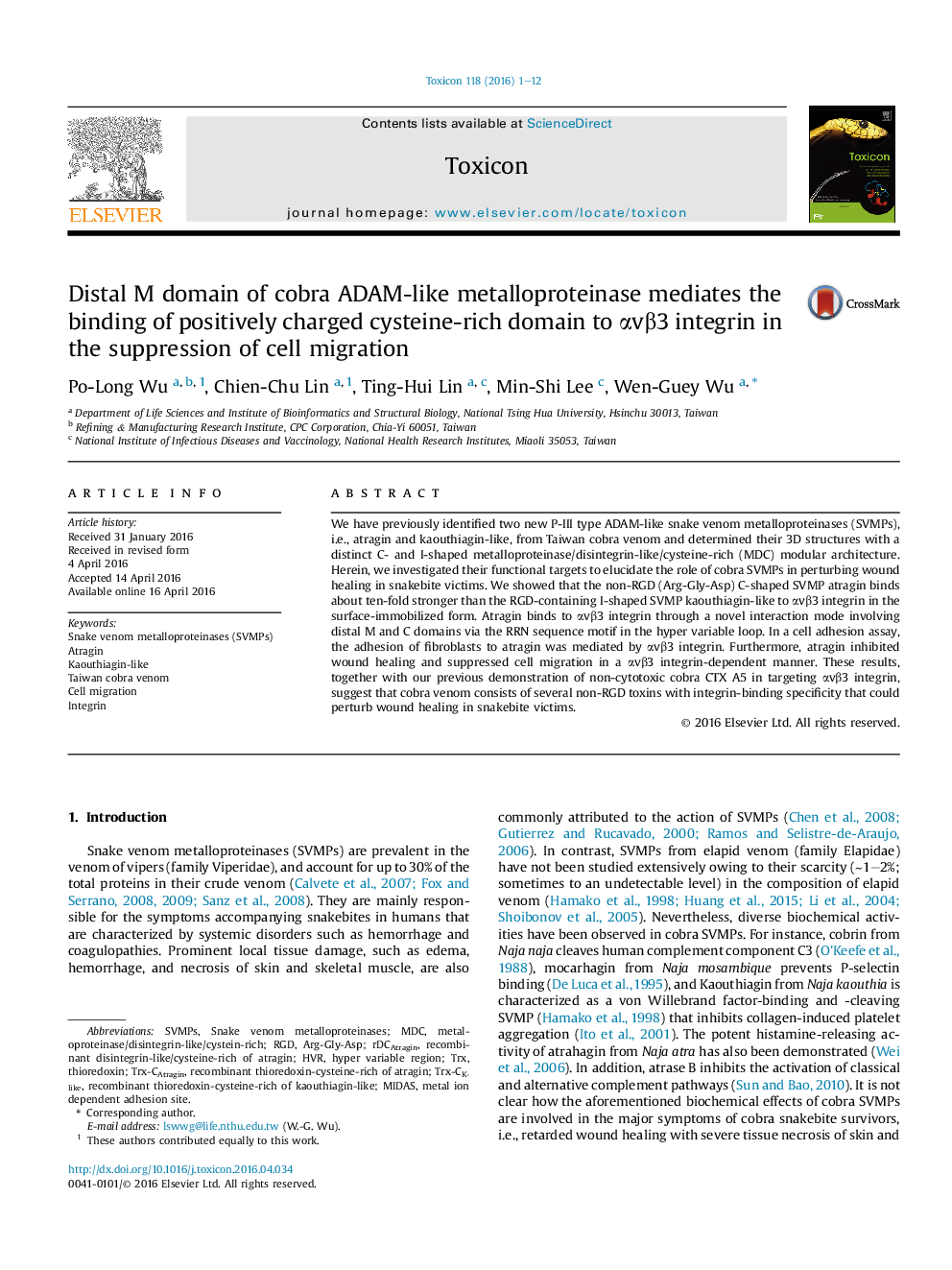| Article ID | Journal | Published Year | Pages | File Type |
|---|---|---|---|---|
| 2064086 | Toxicon | 2016 | 12 Pages |
•Novel integrin binding mode is through distal sites in MDC domain of SVMP.•The overall shapes of ADAM-like protein affect target selection.•Cobra venom consists of non-RGD integrin binding toxins to perturb wound healing.
We have previously identified two new P-III type ADAM-like snake venom metalloproteinases (SVMPs), i.e., atragin and kaouthiagin-like, from Taiwan cobra venom and determined their 3D structures with a distinct C- and I-shaped metalloproteinase/disintegrin-like/cysteine-rich (MDC) modular architecture. Herein, we investigated their functional targets to elucidate the role of cobra SVMPs in perturbing wound healing in snakebite victims. We showed that the non-RGD (Arg-Gly-Asp) C-shaped SVMP atragin binds about ten-fold stronger than the RGD-containing I-shaped SVMP kaouthiagin-like to αvβ3 integrin in the surface-immobilized form. Atragin binds to αvβ3 integrin through a novel interaction mode involving distal M and C domains via the RRN sequence motif in the hyper variable loop. In a cell adhesion assay, the adhesion of fibroblasts to atragin was mediated by αvβ3 integrin. Furthermore, atragin inhibited wound healing and suppressed cell migration in a αvβ3 integrin-dependent manner. These results, together with our previous demonstration of non-cytotoxic cobra CTX A5 in targeting αvβ3 integrin, suggest that cobra venom consists of several non-RGD toxins with integrin-binding specificity that could perturb wound healing in snakebite victims.
